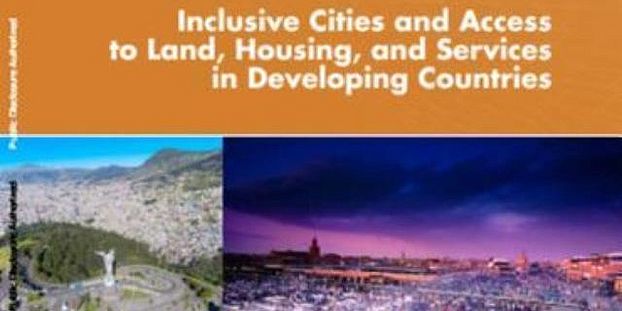Inclusive Cities and Access to Land, Housing, and Services in Developing Countries

Maren Larsen, Mona Serageldin
World Bank Group Urban Development Series Knowledge Papers, 2015
Historically, urban society has always been stratified and somewhat hierarchical. Economic forces and political events have shifted people among strata and reshuffled the composition of elites. Palaces and streets lined with the mansions of notables have continued to stand in sharp contrast to the unsanitary tenements where the poor crowd. Today’s concern with the situation emanates from the convergence of several forces that have affected the city’s traditional role as the locus of upward mobility. The growing disparities in income and wealth experienced worldwide since the mid-1980s have contributed to the erosion of social cohesion in cities and created a patch- work of disjointed urban areas linked physically by trans- port networks but sharing few other connections. In the past two decades, the widening gap in wealth and oppor- tunity has fractured urban society, and the pervasiveness of corruption at all levels of governance has led to public institutions being viewed as cumbersome and exacting bureaucracies and ruling elites as insular and acquisitive (see figure 1.1). The sheer scale of urbanized areas affects spatial and so- cial cohesion. Rapid technological change has accelerated this process. Cultural attitudes are increasingly influenced by unfiltered information on the internet and in particu- lar the propagation of images of modernity, wealth, and achievement. This has contributed to one of the most so- cially significant trends in the past three decades, namely, the rifts within the middle classes, which have tradition- ally acted as the flexible hinges linking the upper and low- er strata within the social structure. The neighborhoods where the middle classes live, their housing conditions, and their way of life shape the perceptions and aspirations of poorer strata and hence play an important role in defin- ing exclusion. Differences in lifestyles within the middle classes attributable to differences in incomes have been ag- gravated by diverging cultural attitudes mainly due to dif- ferences in levels and quality of education. Those able to acquire the skills required to function in the private busi- ness sector have found well-remunerated jobs and avenues for upward mobility for both young men and women. In the Mashreq countries of the Middle East, women now account for close to half of enrollments in universities, even in the engineering departments. In China, although the gap between urban and rural incomes and the disparities within cities have widened, household incomes have all increased albeit at different rates. Massive migration to cities has absorbed surplus rural labor and supported rural development through re- mittances. This feeling of improvement in one’s condition has helped minimize social unrest except in situations of eviction, appropriation of land, and loss of employment. In Brazil and the República Bolivariana de Venezuela, programs extending public services, microcredit, and sub- sidized housing helped lift a significant segment of the population above the poverty line and have led to a wide- spread feeling of decreasing exclusion ...
